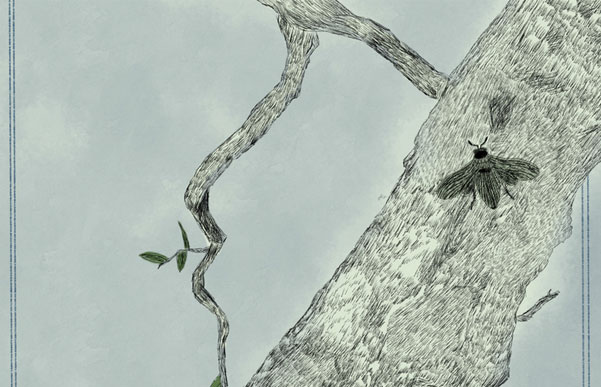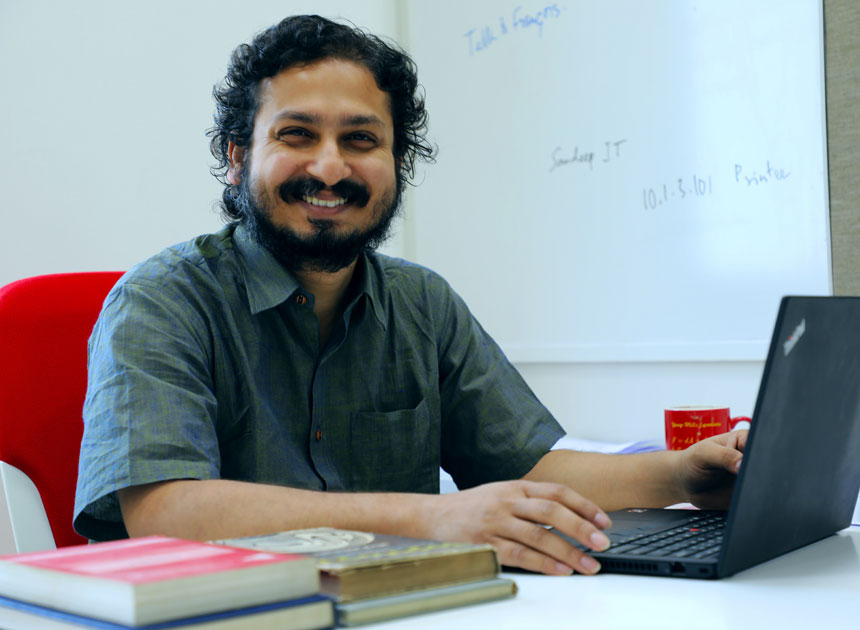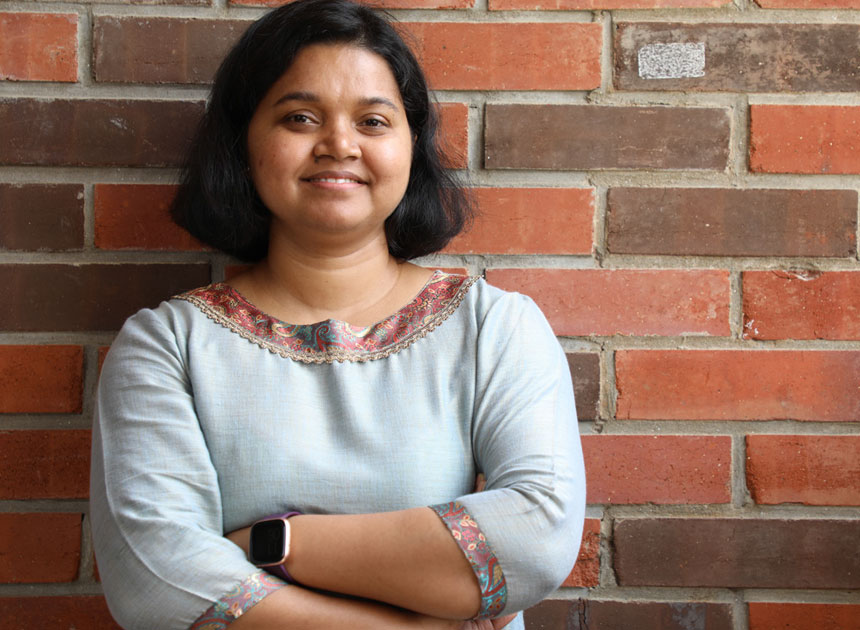
Team ArtiVerse
 The above image details ecological mechanisms that outline
relationships between plant and insect interactions, focusing on
plant morphologies.
The above image details ecological mechanisms that outline
relationships between plant and insect interactions, focusing on
plant morphologies.
Biology classrooms might seem like the least likely spaces to foster artistic inspiration, but this couldn’t be further from the truth. On one particular day, Prof. Anup Padmanabhan’s Microbiology class ended on a slide that was markedly different from the ones before it. Where others would have used a scientific diagram to illustrate microscopy, he had displayed a visually arresting image with a range of vibrant hues. We were immediately intrigued. Here was a space where science and art met and interacted harmoniously – the synergy between the two told a story in a way diagrams could not.
Decades of scientific exploration have been interlaced with efforts to document the natural world. This dates back to cave paintings depicting flora and fauna in the Upper Paleolithic era, and continues into prominent scientists such as Charles Darwin documenting their findings in the form of illustrations. These works, in particular, were created with the aim of making scientific information more accessible to the larger masses. While on the surface, art and science may seem worlds apart, they share the same fundamental principles – observation, representation, and interpretation. The misconception that science is bound by rule-based constraints overrides the idea that science is inherently creative and dynamic. Scientists constantly have to push boundaries in order to answer questions about the natural world, conceiving novel ways to build upon our ever-growing repertoire of knowledge. Albert Einstein once said: “The greatest scientists are also artists.”
With rapid advancements in science, communicating ideas in an accessible manner is now the need of the hour. The most accessible format for information dissemination beyond the scientific community is visual-based scientific material. Emei Ma defines scientific art as any creative expression with the artistic intention to convey an observable understanding of the physical universe. By increasing reader digestibility, scientific art can aid in effectively conveying complex scientific concepts to the general public.
We discovered that the four of us had mutual interests in art and science communication through many after-class discussions. Our journey began with the simple aim of decorating the walls of the biology lab with scientific illustrations centred on research at Ashoka. Thinking about how we could go about this led us to realise that there was a need in the sciences for spaces of creativity and communication.
We founded ArtiVerse in 2020 with the aim of doing just this: establishing a community that harnesses the creative potential of the sciences. As we started out during the pandemic, we had to navigate the unfamiliarity of exclusively using an online platform to carry forward our goals for the club. Coincidentally, all four of us adopted digital media for our individual artistic styles around the same time. This was conducive to our online workspace. During this period, we produced art pieces revolving around the research carried out at different labs at Ashoka. Other series we worked on included illustrated depictions of notable Nobel-winning work, as well as depictions of our individual interpretations of the COVID-19 pandemic and response.
We took to social media to push forward our goal of making scientific information accessible to the larger public. Our Instagram and Twitter accounts are platforms where we share scientific illustrations, informative comics, quotes, factoids and more. Through these posts, we aim to naturalise scientific concepts using eye-catching visuals. Another route we took to achieve this was creating designs for fun science-themed merchandise, such as postcards, stickers, tote bags, and T-shirts. It was important to us that our science communication efforts were not only informative, but enjoyable as well.
Our vision for the club is now to continue growing, by welcoming more people into this community that we have created. We hope to collaborate with scientists and scientific collectives to propel the cause of science communication. Along with this, we hope to expand into the commercial sphere with our science-themed merchandise.
Our greatest takeaway from this experience so far has been watching our work evolve under the influence of each other’s styles. Ending our cycles of creation and weaving our individual pieces into a cohesive narrative always leaves us in awe and with greater inspiration than we had before. We greatly look forward to working with more artists and scientific minds and seeing all the world has to offer – both under the microscope and on the canvas.
The ArtiVerse Club was founded by four Ashoka biology majors – Ameya Menon, Lari Warshong, Mahati Ramachandra, and Varshini Krishnakumar. ArtiVerse aims to be a community, centred around the creation of science-based art.

Sourav Ghosh, Assistant Professor of Mathematics, on what makes math distinct from other branches of science

Munmun Ghosh, Assistant Professor of Chemistry, writes about research that explores ways to create alternative sources of energy